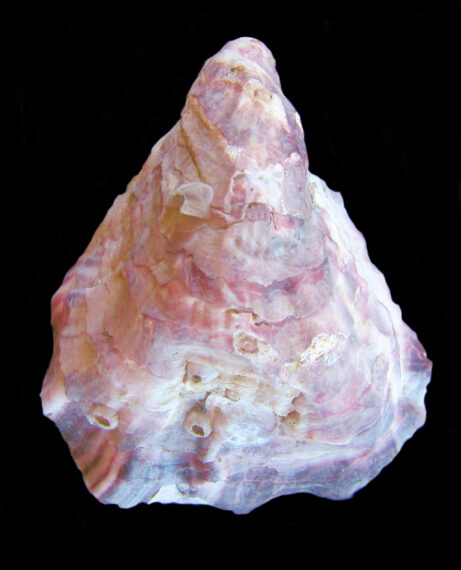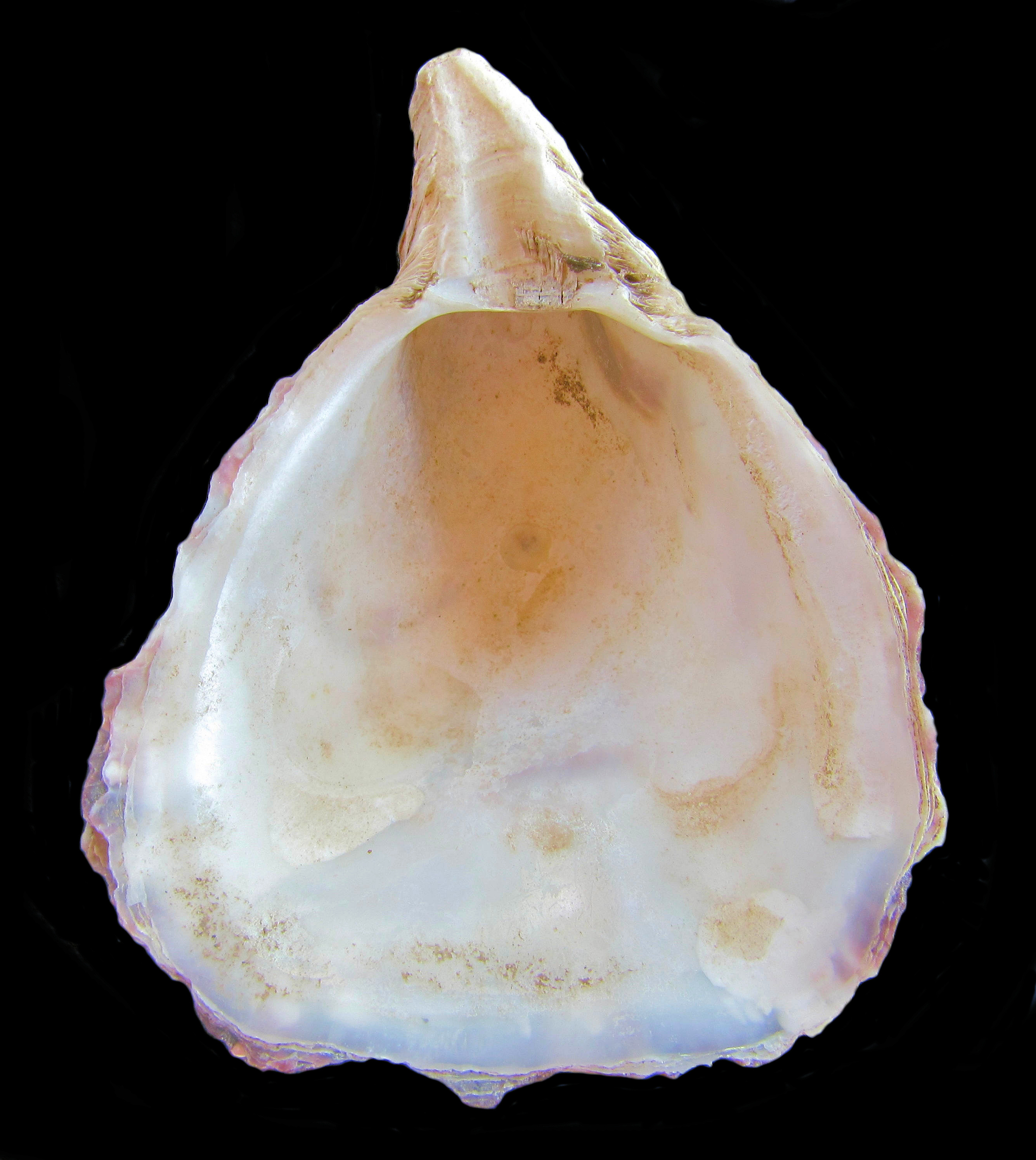Pacific Oyster Shell, Matallana gigas

 Pacific Oyster Shell, Matallana gigas. Shell collected in the greater San Diego area, San Diego California, April 2012. Size: 37 cm (14.6 inches) x 32 cm (12.6 inches). Collection, photograph and identification courtesy of Bob Hillis, Ivins, Utah.
Pacific Oyster Shell, Matallana gigas. Shell collected in the greater San Diego area, San Diego California, April 2012. Size: 37 cm (14.6 inches) x 32 cm (12.6 inches). Collection, photograph and identification courtesy of Bob Hillis, Ivins, Utah.
The Pacific Oyster, Matallana gigas (Thuneberg, 1793), is a bivalve mollusk that is a member of the True Oysters of the Ostreidae Family. They are also known as the Giant Pacific Oyster, Japanese Oyster and Pacific Cup Oyster. The Shell is large in stature and highly variable in shape, from elongated oval, to teardrop-shaped. They appear to have a layered construction with a highly arched left valve and a relatively flat right valve. A percentage of the shells have strong visible radial ribs but others do not; some have frilled margins and others do not. The exterior of the shell is a mottled white, gray, and purple, often with radial banding and the interior is white. The Pacific Oysters reach a maximum of 45 cm (18 inches) in length and 35 cm (14 inches) in height.
Pacific Oysters are found attached to rocks and other hard substrate in the intertidal zone to depths up to 6 m (20 feet). They are native to the Western Pacific but were transplanted and commercially farmed by the Japanese all over the world commencing 100 years ago. Some oysters escape these farms and naturalize. The Pacific Oysters have been cultivated at several locations along the Baja Peninsula including Magdalena Bay and La Paz Bay, Baja California Sur but escapees can be found in numerous other locations. In some locations they have become highly invasive displacing and destroying native oyster populations.
Synonyms include Lopha posjetica, Ostraea gravitesta, Ostraea laperousii, Ostraea posjetica, Ostraea talienwhanensis, and Ostraea posjetica.